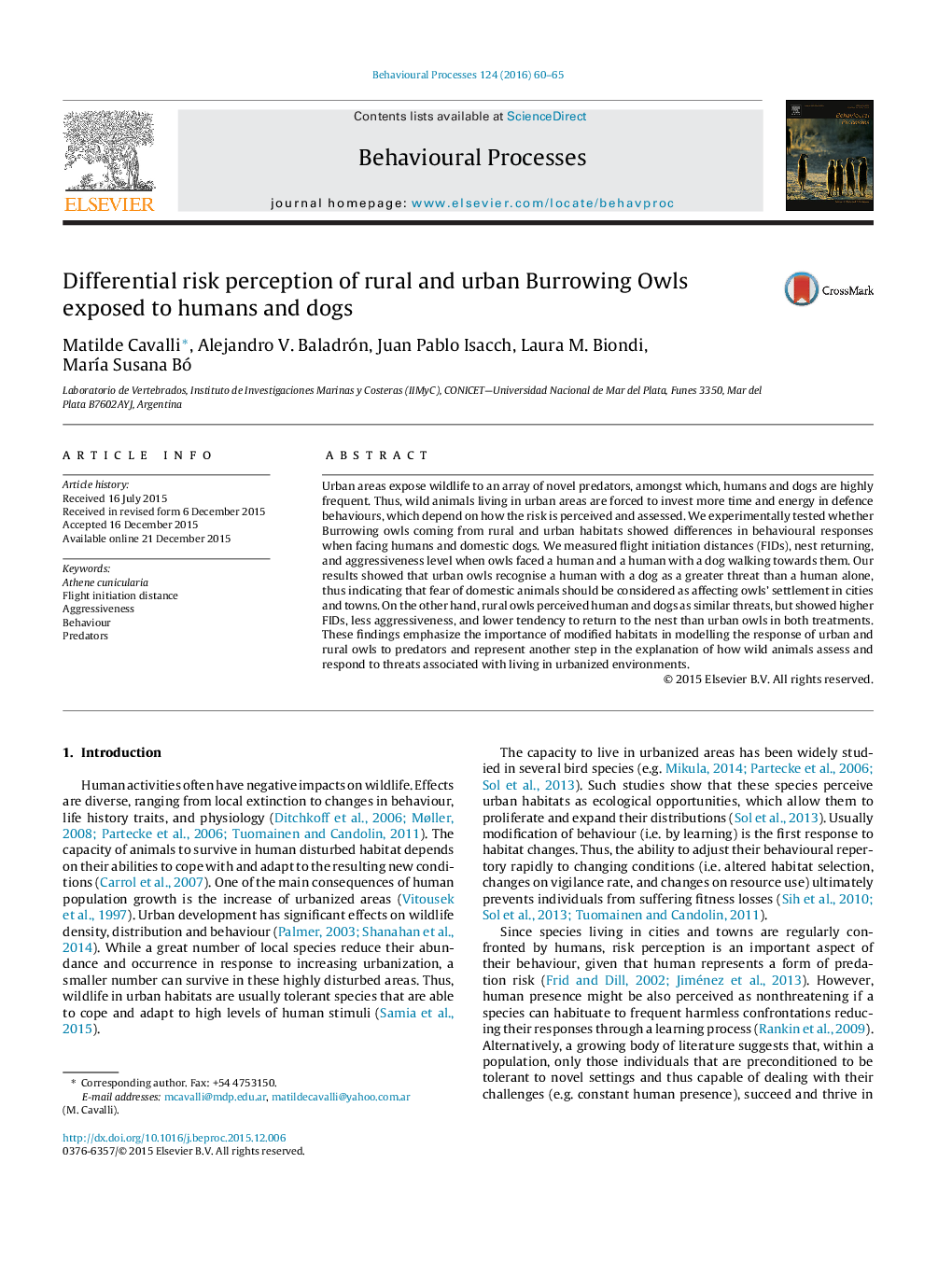| کد مقاله | کد نشریه | سال انتشار | مقاله انگلیسی | نسخه تمام متن |
|---|---|---|---|---|
| 2426455 | 1553156 | 2016 | 6 صفحه PDF | دانلود رایگان |
• Urban owls differ from rural owls in FIDs, aggressiveness level and nest returning behaviour.
• Human and dogs represent similar threats for rural owls.
• Urban owls recognise human with dogs as greater threats than humans alone.
• Risk perception to human and domestic animals might explain settlement in urban areas.
Urban areas expose wildlife to an array of novel predators, amongst which, humans and dogs are highly frequent. Thus, wild animals living in urban areas are forced to invest more time and energy in defence behaviours, which depend on how the risk is perceived and assessed. We experimentally tested whether Burrowing owls coming from rural and urban habitats showed differences in behavioural responses when facing humans and domestic dogs. We measured flight initiation distances (FIDs), nest returning, and aggressiveness level when owls faced a human and a human with a dog walking towards them. Our results showed that urban owls recognise a human with a dog as a greater threat than a human alone, thus indicating that fear of domestic animals should be considered as affecting owls' settlement in cities and towns. On the other hand, rural owls perceived human and dogs as similar threats, but showed higher FIDs, less aggressiveness, and lower tendency to return to the nest than urban owls in both treatments. These findings emphasize the importance of modified habitats in modelling the response of urban and rural owls to predators and represent another step in the explanation of how wild animals assess and respond to threats associated with living in urbanized environments.
Journal: Behavioural Processes - Volume 124, March 2016, Pages 60–65
